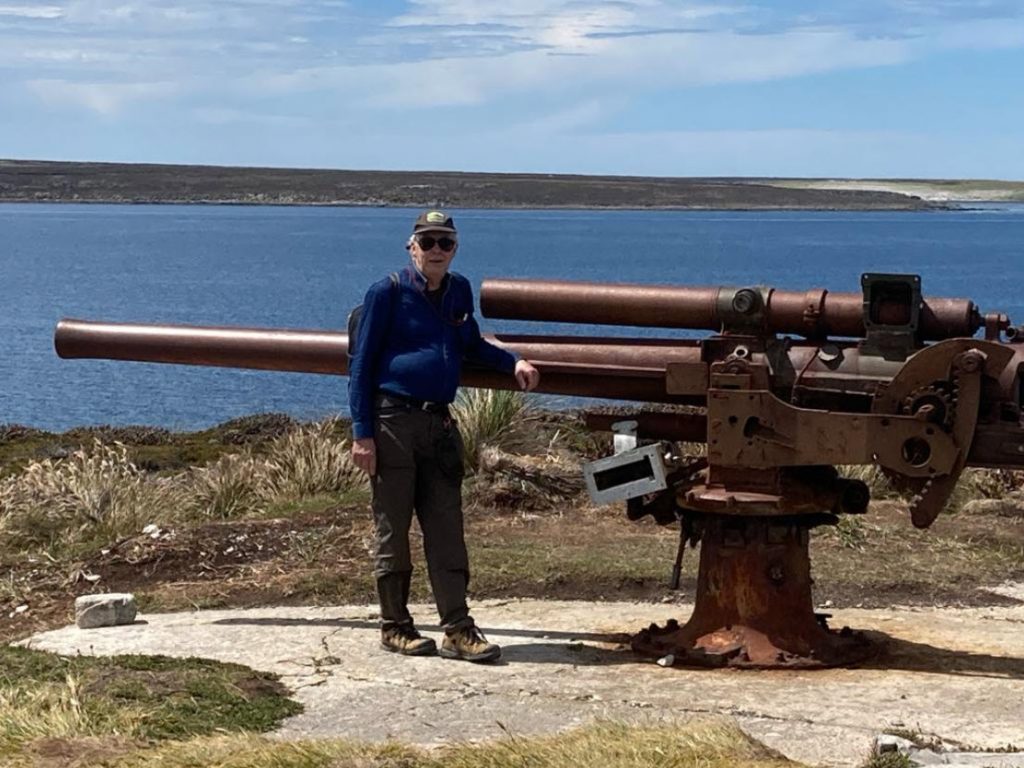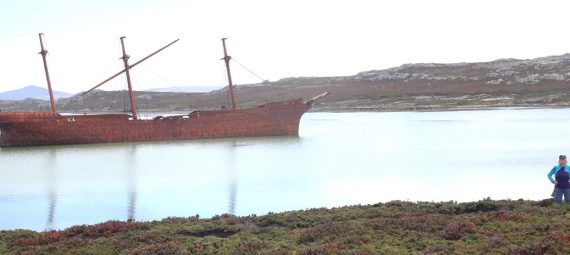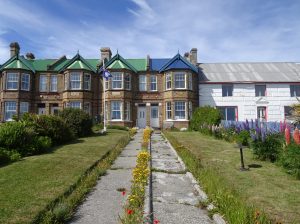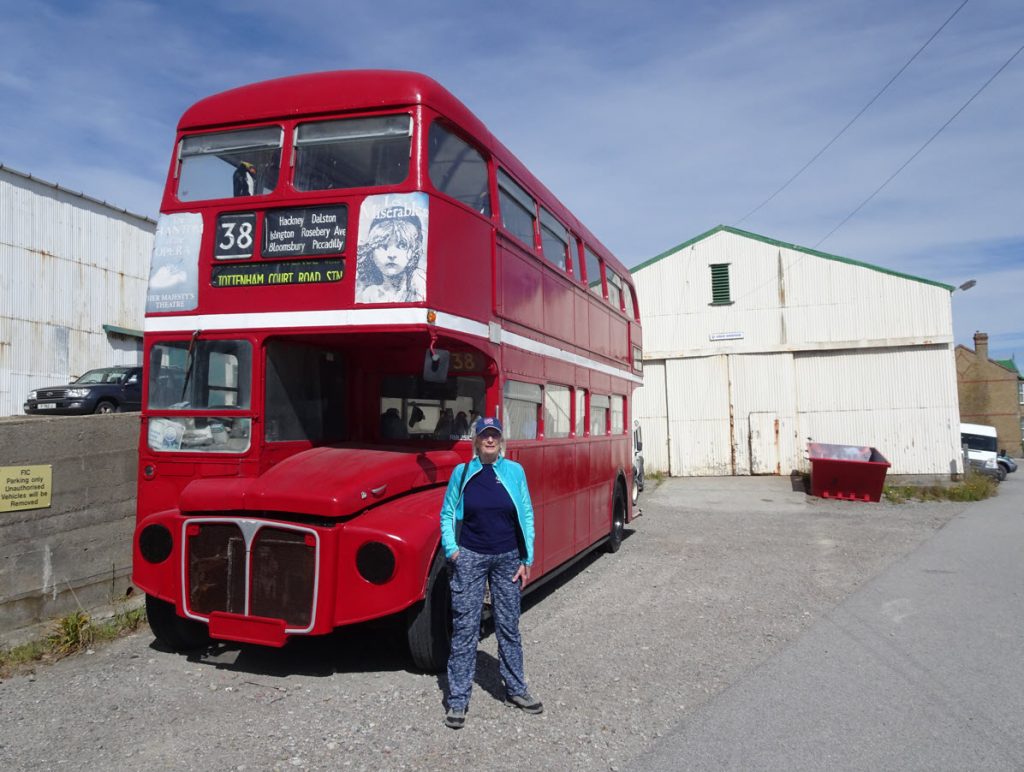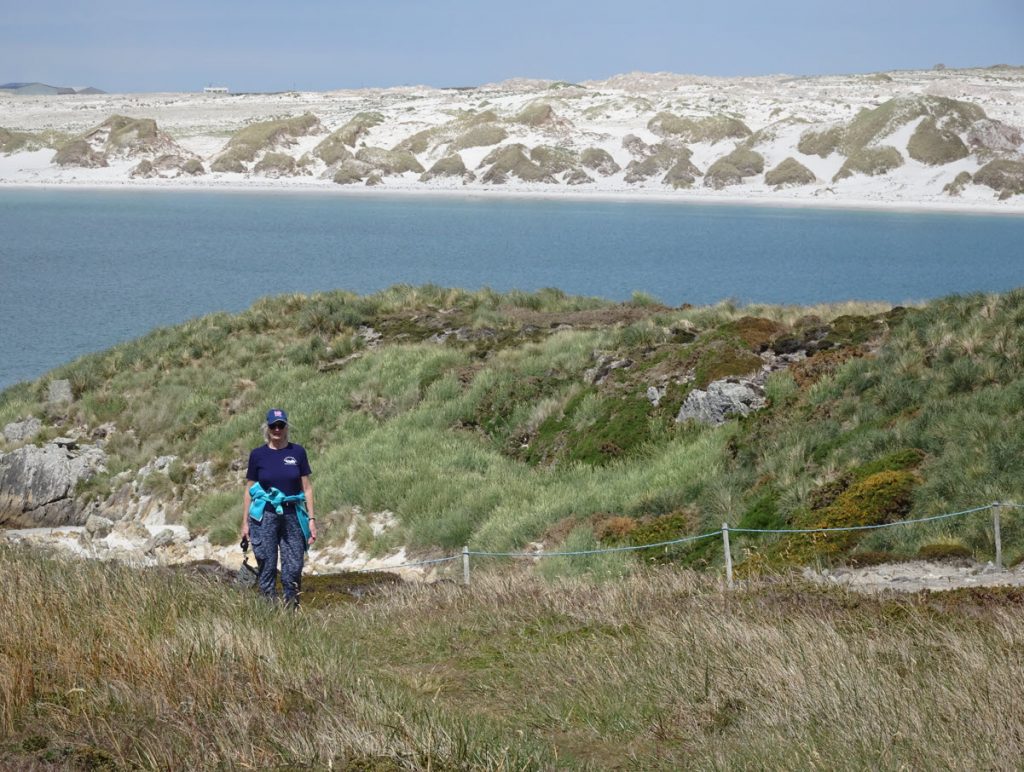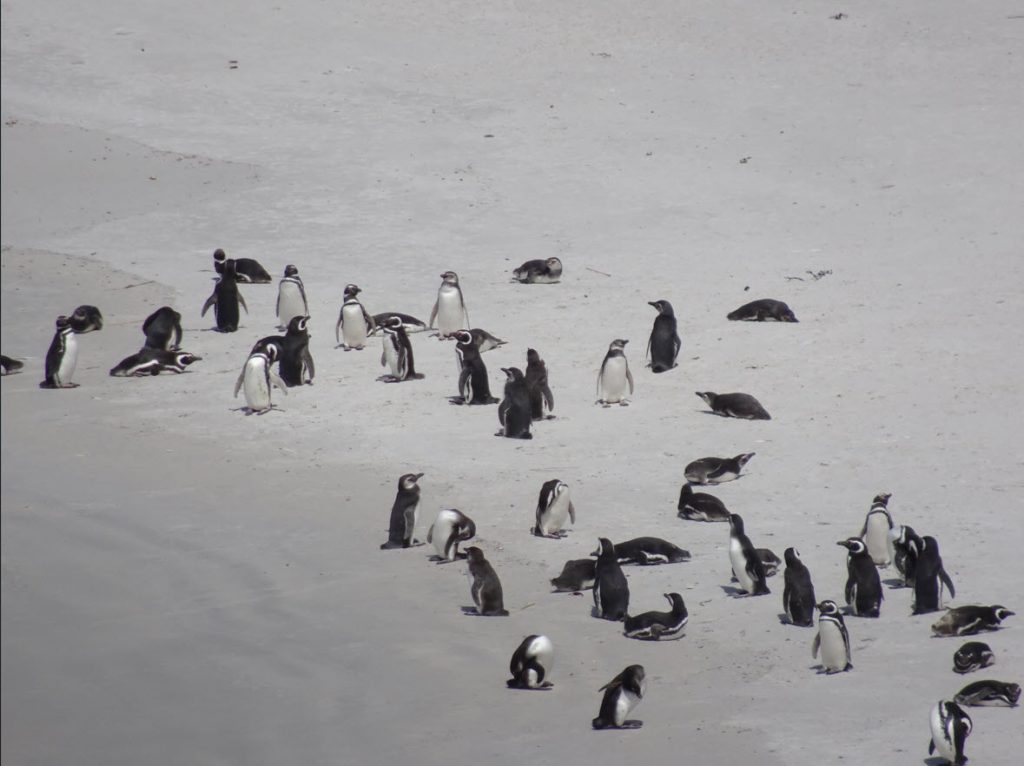4th – 5th January 2024
Stanley
After a full day’s sailing, we were woken up in the morning with the summer sun streaming on our window curtains, and the humming and hawing of the ship’s engines, laying to the quay of Stanley.
We were berthed about two miles from the town centre, and we were offered busses taking us there, as well as busses taking us in the opposite direction to Gypsy Cove, more of later. We decided to head for Stanley early, before our buses left, as there was also another ship visiting Stanley, the Norwegian Star, a three thousand passenger cruise ship. We wanted to get to little Stanley town before it would get mobbed with passengers from the Norwegian Star.
We walked the three kilometres along the waterside. It was interesting to see the very English houses in very English gardens with very English driveways. There were Land Rovers everywhere – mainly Defenders and Discoveries. The occasional ‘Hello’ to people mowing their lawn was just like being in deepest Kent or Surrey.
As we approached the centre, houses did not get bigger or grander. Perhaps the gardens were smaller, but Stanley could definitely be classified as a ‘small town’, with a population of just under two and a half thousand.
Large tender boats were approaching from the huge Norwegian Star to the little quay at the nominal town centre. We were focussed, heading past the quay to visit the History Dockyard Museum, aiming to visit before it became too crowded. It was an absolute delight.
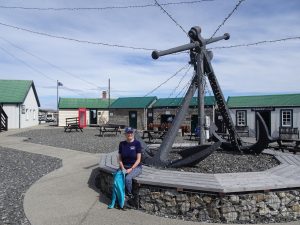
The museum is a charity, put together by enthusiastic volunteer groups. Memorabilia, written stories, wildlife tableaus, hair-raising stories of shipwrecks and superhuman heroics, and a short film documenting the children’s experiences of the brief but violent war when Argentina occupied the Falklands in 1982. Certainly, the central attraction in Stanley.
After a brief wander around sparse streets, we were lucky to find an excellent tea house, where we had coffee, a sandwich and a lovely discussion with a nice Swiss couple from the Seaventure, who happened to sit beside us. They urged us to visit Gypsy Cove – not for the penguin colony, but for the landscape and amazing beach.
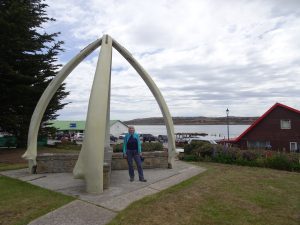
Emerging from the tea house, we took a picture by the Whalebone Arch and popped into the lovely small cathedral, with a beautiful tribute to those servicemen and women that lost their lives in 1982 to secure the freedom of the Falklands population.
Gypsy Cove
With exquisite timing, we hopped on a bus, headed for the Seaventure, jumping off at an unscheduled stop before the bus entered the quay. Our aim was to walk to Gypsy Cove, about six kilometres past the ship. A long, brisk walk alongside Whalebone Cove, with the prominent wreck of Lady Elizabeth, a hulking masted ship, damaged at Cape Horn and abandoned in the Falklands. There was good signage along a footpath, so that we could avoid the long dusty road.
The Gypsy and Yorke Bays were pristine, wide, fine sand beaches. Only knowing the water temperature held back the desire to plunge into the sea! The small colony of Magellanic Penguins had bagged a fine piece of coastline. There was also the remnant of a World War II artillery gun, deployed to protect the harbour and city. The site was peaceful. We were delighted to have made the effort in the glorious sunshine, but we couldn’t afford to dawdle in order to meet our on-board time of 16.30.
Casting off, the Seaventure passed the huge Norwegian Star, exchanging deep-throated ship horn greetings.
